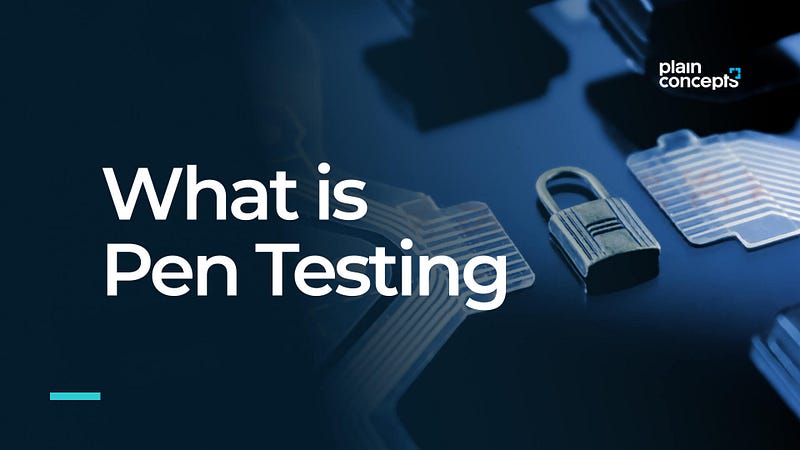
Comprehensive Guide to Pentesting Methodology: From Zero to Hero
Dive deep into the pentesting methodology with our comprehensive guide, covering everything from physical attacks to post-exploitation strategies. Perfect for beginners and experts alike.
In the ever-evolving landscape of cybersecurity, the art and science of penetration testing (pentesting) remain at the forefront of defense strategies. Pentesting, a simulated cyber attack against your computer system to check for exploitable vulnerabilities, is not just a task but an ongoing process of enhancing security measures.
This guide takes you on a journey from zero to hero in the realm of pentesting, offering a detailed look at methodologies used by professionals to safeguard networks and systems against the most cunning of adversaries.
1. Physical Attacks
The journey into pentesting begins with understanding the significance of physical access.
Physical attacks involve direct access to devices, enabling attackers to exploit hardware and software vulnerabilities or employing social engineering tactics to bypass security protocols. From USB drop attacks to social engineering tactics, mastering physical penetration techniques is a crucial step.
Understanding these vulnerabilities highlights the importance of securing physical access to systems and the necessity of comprehensive security policies that include physical threats.
Here is the Pinephone:
Bluethooth exploit:
2. Discovering Hosts and Assets
Whether conducting internal or external pentesting, identifying the target network’s hosts and assets is paramount.
This phase involves mapping the network, uncovering active devices, and cataloging critical systems and services.
Techniques vary based on the scope — internal versus external. Internally, tools like network scanners and IP sweepers help identify devices connected to the network.
Externally, domain and IP enumeration tools, along with DNS and WHOIS queries, uncover assets exposed to the internet.
This phase sets the stage for targeted attacks by providing a comprehensive picture of the potential attack surface.
See my guide on Nmap !
And wireshark:
Another very good tool is Bettercap !
3. Network Analysis — Service Discovery — Finding Vulnerabilities
Diving deeper, pentesters engage in network sniffing and service discovery, crucial for revealing operational details about the target. This involves scanning ports and detecting running services to understand the network’s architecture better.
Tools like Nmap and Wireshark become invaluable, offering the ability to uncover open ports, service versions, and potential entry points for further exploitation.
Also see my guide on Nmap !
Note that you can also use Fuzzing ! Network-based exist too, see:
Personally Identifiable Information (PII) scanner (OSINT):
For API, you can use Kite Runner:
For binaries, there is the old good fashion GDB !
Using dorking techniques:
4. Exploiting Vulnerabilities
Identifying vulnerabilities is just the beginning. The next step is to exploit these weaknesses to gain unauthorized access or gather sensitive information.
This section covers the search for known vulnerabilities and the use of exploits, ranging from public databases like CVE to exploitation frameworks like Metasploit.
It’s a game of cat and mouse, where understanding the latest vulnerabilities and patch management practices is key.
I already made a guide on Sambaaa (SMB):
SQL injection:
SQLMap:
XSS:
CSRF:
Buffer Overflow and Shellcode Injection:
Linux and Windows Syscalls vulnerabilities exploits
Local network vulnerability with ARP:
5. Gaining and Maintaining Access:
Successful exploitation often leads to gaining initial access, but the goal is to maintain that access discreetly.
This involves deploying payloads, establishing backdoors, and ensuring persistent access for further exploration and data exfiltration.
Techniques for avoiding detection, such as using encrypted shells and mimicking normal network traffic, are also covered.
6. Privilege Escalation
Once inside the system, escalating privileges becomes the focus. This involves moving from a low-privileged user to a higher-privileged one, often leveraging system vulnerabilities or misconfigurations.
This section delves into common privilege escalation techniques for both Windows and Linux environments, highlighting tools and strategies to achieve administrative access.
7. Post-Exploitation and Cleanup
The post-exploitation phase focuses on achieving the objectives of the pentest, such as data exfiltration, system mapping, and establishing persistence for future access.
This involves careful planning to avoid detection and ensure that the compromised system remains useful for future actions.
Cleanup is equally important; removing logs, deleting tools, and undoing changes made during the attack ensure that the pentest leaves no obvious traces, preserving the integrity of the system for operational security.
Conclusion
Pentesting is an art and science, requiring a blend of technical skills, creativity, and ethical integrity. This guide has walked you through the fundamental phases of pentesting methodology, from initial reconnaissance to advanced exploitation techniques. As you embark on or continue your journey in cybersecurity, remember that the landscape is ever-evolving. Continuous learning, practice, and adherence to ethical guidelines will not only advance your skills but also contribute to the broader goal of creating a safer digital world for everyone.
Remember, your engagement and feedback help me improve. If you found this article insightful, please give it a clap and follow. Your support motivates me to share more content like this.
👏 Follow us for more cybersecurity insights and tips.
Subscribe for more content !
Follow me on Twitter: CyberElNiak
Connect on LinkedIn






